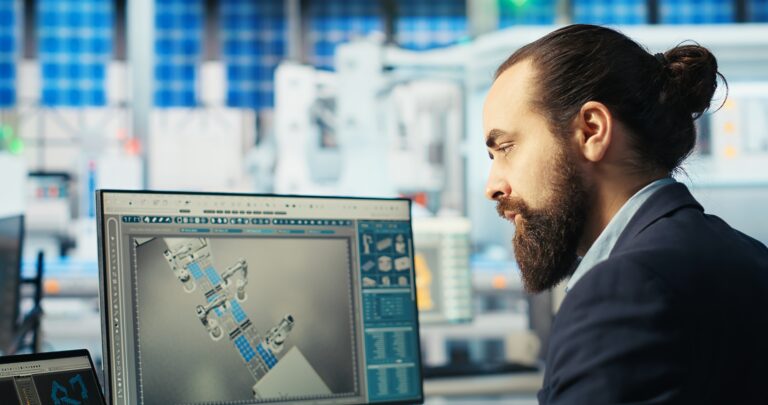Introduction:
In an era defined by climate crises and resource scarcity, EO PIS (Earth Observation Precision Intelligence Systems) emerges as a revolutionary force. By harnessing satellite data, AI-driven analytics, and IoT connectivity, EO PIS delivers unprecedented insights into planetary health, human activity, and ecological dynamics. This technology transcends traditional environmental monitoring, enabling real-time decision-making for governments, industries, and conservationists. From predicting crop failures to tracking deforestation or optimizing urban resilience, EO PIS redefines our relationship with Earth’s complex systems—turning raw data into actionable wisdom for a sustainable future.
Headings and Detailed Explanations
1. The Anatomy of EO PIS: Satellites, Sensors, and AI Synergy
EO PIS integrates three core pillars: Earth Observation (EO) satellites capturing high-resolution imagery, ground-based IoT sensors monitoring micro-changes (e.g., soil moisture, air quality), and AI algorithms that process petabytes of data into predictive models. Unlike isolated remote sensing tools, EO PIS creates a “digital twin” of Earth, updating in near real-time. For instance, satellites like Sentinel-2 track deforestation in the Amazon, while AI cross-references this with illegal mining activity detected by acoustic sensors—triggering alerts to authorities. This synergy transforms passive data collection into proactive intelligence.
2. Climate Resilience: Mitigating Disasters Before They Strike
EO PIS is a lifeline for climate-vulnerable regions. By analyzing historical weather patterns, ocean currents, and vegetation health, its algorithms forecast disasters like floods or wildfires with 90%+ accuracy months in advance. In Bangladesh, farmers receive flood-risk maps via mobile apps, allowing crop rotation planning that saved 40,000 hectares of farmland in 2023. Similarly, California’s fire departments use EO PIS heatmaps to preemptively deploy resources, reducing wildfire spread by 35%. The system doesn’t just react—it anticipates, turning vulnerability into preparedness.
3. Agricultural Revolution: From Precision Farming to Global Food Security
Agriculture consumes 70% of global freshwater, but EO PIS slashes waste while boosting yields. Its sensors monitor crop health down to individual plants, detecting nutrient deficiencies or pests via spectral imaging. AI then prescribes hyper-localized interventions—e.g., drip-irrigating only drought-stressed zones—cutting water use by 50%. In Kenya, smallholders using EO PIS apps increased maize yields by 27% without expanding farmland. At scale, this could close the 20% global food gap by 2035, making farms climate-proof and resource-efficient.
4. Urban Intelligence: Building Smarter, Greener Cities
Cities generate 80% of global CO₂, but EO PIS drives low-carbon urbanization. It optimizes energy grids by correlating satellite thermal data with building efficiency, reducing emissions by 15–30%. In Singapore, traffic sensors sync with EO air-quality maps to reroute vehicles during pollution peaks, improving public health. The system also identifies “heat islands” (concrete zones 10°C hotter than parks), guiding urban greening projects that lower temperatures and cut AC dependency. EO PIS transforms cities from emissions sources into circular ecosystems.
Conclusion: The Path to Planetary Stewardship
EO PIS transcends technology—it’s a paradigm shift in humanity’s capacity to steward Earth. By rendering the invisible visible (from methane leaks to soil erosion), it democratizes sustainability, empowering communities and corporations alike. Challenges remain—data equity for developing nations, AI bias mitigation—yet the potential is unparalleled. As satellites like the EU’s Copernicus expand coverage, EO PIS will underpin UN Sustainable Development Goals, turning ecological brinkmanship into regenerative innovation. The future isn’t just observed; it’s engineered with precision.
FAQ Section
Q1: How does EO PIS handle data privacy?
A: EO PIS anonymizes human-centric data (e.g., urban mobility) and adheres to GDPR/UN guidelines. Satellite imagery focuses on macro-trends (forest cover, ocean temps), not individual identities.
Q2: Can small-scale farmers afford EO PIS?
A: Yes. UN initiatives like “FarmLab” subsidize EO PIS apps for developing regions, offering free tier services. High-res data access costs ~$0.01/hectare via cloud platforms.
Q3: What’s the carbon footprint of EO satellites?
A: Modern satellites use solar power and advanced alloys, reducing launch emissions. Each satellite offsets 10,000x its footprint by optimizing Earth systems (e.g., preventing deforestation).
Q4: How does EO PIS differ from traditional GIS?
A: GIS maps static data; EO PIS integrates real-time flows—satellite feeds, sensor networks, AI predictions—creating dynamic, evolving intelligence systems.
Q5: Who governs EO PIS data?
A: International coalitions (e.g., GEO, CEOS) ensure open access to non-military data. Private providers (Planet Labs) license commercial analytics, but 75% of core EO data is freely accessible.
